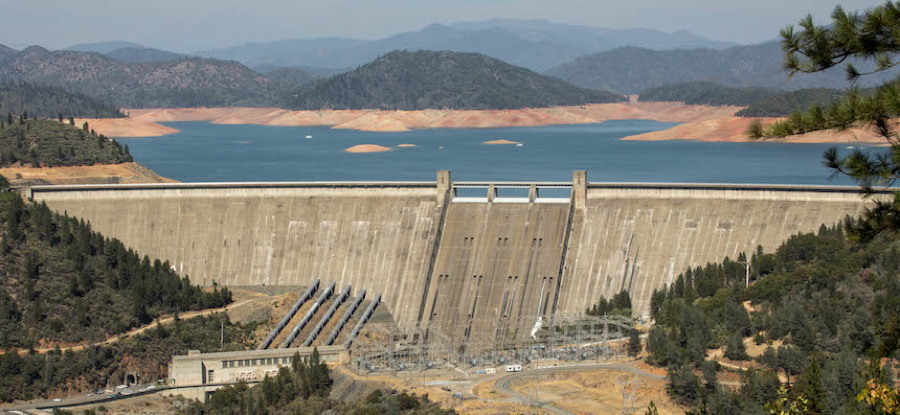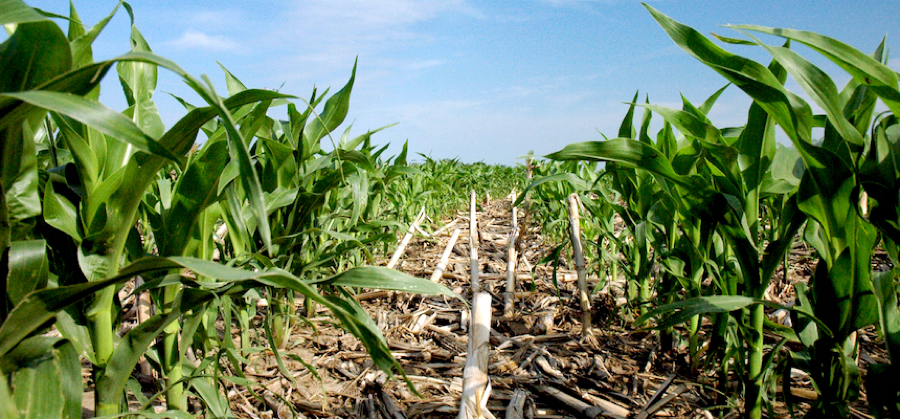Quick Summary
- Research at UC Davis has provided leadership on the science, impact and mitigation of climate change
- Water conservation saves energy, cuts greenhouse gases
- Climate change may trap the rural poor
Climate change means many different things to many different people, but one thing is clear: The issue touches virtually every aspect of the planet’s natural capital and affects society’s ability to solve pressing issues related to human health, the economy and ecosystem sustainability.
From the health of the oceans and food security to human equity and welfare issues worldwide, research at UC Davis has provided leadership on the science, impact and mitigation of climate change, says Benjamin Houlton, director of the John Muir Institute of the Environment.
“Moving forward, we will continue to look for new opportunities to leverage our collective knowledge to help adapt to — and solve — climate change in order to ensure the vitality of planet Earth for generations,” Houlton says.
1. Climate change may not lead to increased migration to the U.S. but may trap rural poor

A recent paper by Giovanni Peri of the UC Davis Center for Poverty Research and Cristina Cattaneo of Fondazione Eni Enrico Mattei, a nonprofit research institution, looked at the effect of increasing temperatures on human migration patterns. Their research showed middle-income countries experience a slight increase in emigration related to temperature rise while poor countries show a decrease. A dramatic increase in migration to Europe or the U.S. due to climate change was not supported by their findings.
Why it matters: It is estimated that hundreds of millions of people will be directly or indirectly affected by climate change. Populations from middle-income countries may be able to mitigate the effects of global warming by relocating from rural to urban areas, but rising temperatures may trap rural populations of low-income countries in local poverty.
2. Rising carbon dioxide levels are damaging world’s oceans, marine life

A report from a multistate panel of scientists, including Tessa Hill and John Largier of UC Davis Bodega Marine Laboratory, outlines how atmospheric carbon dioxide emissions from human activities are not only affecting global climate change but are also being absorbed by the world’s oceans, leading to ocean acidification, a change in ocean chemistry.
This same process is coupled with hypoxia, areas of low or depleted oxygen, which create “dead zones” for marine life. Ocean acidity is expected to continue to change in lockstep with rising atmospheric carbon dioxide emissions.
Already, marine shelled organisms in the Pacific Ocean are having difficulty forming protective outer shells, and the West Coast shellfish industry is seeing high mortality rates during early life stages when shell formation is critical. A separate study by former UC Davis postdoctoral marine biologist Sarah E. Myhre (formerly Moffitt) found that ocean dead zones may take hundreds, if not thousands, of years to recover.
Why it matters: Failure to reduce global carbon dioxide emissions is expected to have devastating ecological consequences for the West Coast in the decades to come.
3. Rising levels of CO2 decrease protein in wheat

Arnold Bloom of the UC Davis Department of Plant Sciences evaluated the protein content of wheat grown in a field with elevated carbon dioxide levels comparable to what is expected in the next few decades due to climate change.
The study found elevated carbon dioxide inhibits the conversion of nitrate into protein, resulting in lower protein levels. Protein concentrations in the grain of rice and barley — as well as in potato tubers — also show decline, on average, by approximately 8 percent under elevated levels of atmospheric carbon dioxide.
Why it matters: Wheat makes up 20 percent of protein in the human diet. Bloom anticipates an 8 to 10 percent drop in wheat protein, leading to a significant drop in protein available for a growing human population.
4. Water conservation saves energy, cuts greenhouse gases

Taking advantage of the circumstances created by California’s drought, Frank Loge and other researchers from the UC Davis Center for Water-Energy Efficiency analyzed data from California electric utilities and water districts and found that mandated water conservation in California from June 2015 through February 2016 resulted in energy savings totaling 922,543 megawatt-hours — enough to power 135,000 homes for a year.
The analysis was conservative, measuring only the electricity savings associated with treating and pumping less water; the measured level of energy savings would be even higher if the electricity used to dispose of and treat water once it leaves homes and factories had been factored in the analysis.
Why it matters: The findings reveal water conservation has the potential to significantly reduce energy usage and greenhouse gases.
5. California’s policy solutions for climate change offer model for U.S., world

California pioneered car-centered cities and lifestyles beginning in the 1930s, and with that motorization came traffic congestion, high oil use, air pollution, greenhouse-gas emissions and smog.
The state began crafting policy solutions to address these environmental challenges as early as the 1960s, and created the California Air Resources Board, the agency most responsible for California’s leadership in air pollution regulation and policy, in 1967.
This case study by Daniel Sperling of the UC Davis Institute of Transportation Studies and Anthony Eggert, formerly of the UC Davis Policy Institute, takes an in-depth look at the history of California’s comprehensive set of policies, regulations and incentives to reduce greenhouse gas emissions, with particular emphasis on those associated with transportation — vehicles, fuels and mobility.
Why it matters: The international community has not succeeded in creating comprehensive climate protocols, programs and policies. California’s model is a resource for states and nations to address climate change.
6. Lighting technology improvements are needed to achieve significant energy savings

In California, lighting accounts for 35 percent of the electricity used by commercial properties and 22 percent used by residential properties. To look for new ways to reduce energy consumption from lighting in California, the UC Davis California Lighting Technology Center, co-directed by Michael Siminovitch and Konstantinos Papamichael, partnered with the California Energy Commission to initiate a comprehensive lighting research, development, demonstration and outreach program.
In a detailed report, the partnership outlines how the use of light-emitting diode technology and advanced lighting and building design can achieve significant, sustained electricity savings.
Why it matters: Lighting energy improvements are a necessary and effective way to reduce energy and greenhouse gas emissions.
7. Climate change threatens extinction for 82 percent of California native fishes

Freshwater fishes are in decline worldwide because of human-caused degradation of aquatic habitats. A freshwater fish study by Peter B. Moyle, Joseph D. Kiernan, Patrick K. Crain, and Rebecca M. Quiñones of the UC Davis Center for Watershed Sciences found salmon and other native freshwater fishes in California will likely become extinct within the next century due to climate change.
Of the 121 native fish species surveyed, 82 percent are likely to be driven to extinction or very low numbers as climate change speeds the decline of already depleted populations.
Why it matters: Mitigating the effects of climate change is key to protecting many species of native flora and fauna from extinction.
8. No-till methods of farming result in lower crop yield rates compared to conventional plowing

An international cultivation study by Bruce Linquist, Mark Lundy, Chris van Kessel and Cameron M. Pittelkow of the UC Davis Department of Plant Sciences found that no-till farming, a key conservation agriculture strategy that avoids conventional plowing and otherwise disturbing the soil, does not necessarily bring a hoped-for boost in crop yields in much of the world.
The analysis found that no-till, which has been promoted for its potential to increase yields and slow climate change, on average leads to yield declines when compared to conventional tillage systems.
When all three conservation agriculture methods were used — no-till and direct planting, permanent cover of the soil by residue, or cover crop and crop rotation — crop yields improved although they were still less than when conventional tillage was used. However, in dryland areas no-till farming shows much promise and can even increase crop yields. Globally, conservation agriculture is practiced on about 482,000 square miles in many regions identified as vulnerable to climate change.
Why it matters: No-till has been promoted as a sustainable method for improving soil quality and food security. However, field experiments in many regions suggest an early decline in crop yields unless all three conservation agriculture methods are used.
9. UC Davis West Village provides lessons for reaching ‘zero net energy’

West Village houses nearly 2,000 residents as well as several UC Davis energy and transportation research centers, and the Honda Smart Home. The development serves as a living laboratory that explores how zero net energy design works in practice.
A recent annual report details how the community is working toward its goal of producing 100 percent of the energy it uses; at this time the community is producing 82 percent of the energy it consumes.
Why it matters: Neighborhoods and buildings are being designed and promoted as zero net energy, but whether they meet that goal can only be verified with real residents and businesses in place. West Village is continuously learning new ways to reach this goal and informing other ambitious net zero developments in California and across the country.
10. A more accurate measurement of nitrogen indicates warmer planet

Ben Houlton of the UC Davis John Muir Institute of the Environment and his colleagues in the UC Davis Department of Land, Air and Water Resource are credited with creating a new solution to more accurately forecast nitrogen’s effects on global warming. Nitrogen, which occurs naturally in the air and water, and also enters the environment through man-made agricultural fertilizers, is a critical component of climate change. It is also increasingly being viewed as too much of a good thing.
The researchers in the nitrogen study developed a benchmarking technique to more accurately forecast nitrogen’s effects on the climate cycle, tracing its journey to model how it moves through ecosystems and how it escapes to the air or water.
Why it matters: Nitrogen determines how much carbon dioxide emissions natural ecosystems can absorb, and it directly warms the climate as nitrous oxide in the atmosphere. Incorporating this new benchmarking method shows the planet may be headed for a warmer future than was previously thought.
Media Resources
Lisa Howard, 530-752-8117, lehoward@ucdavis.edu